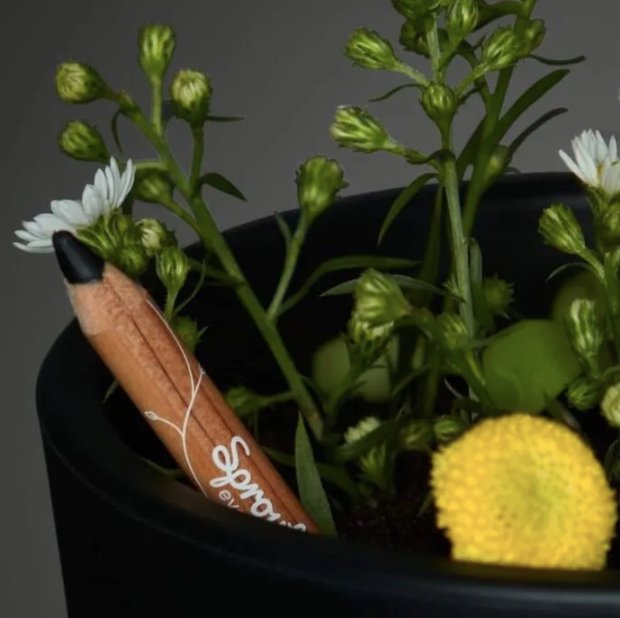Identifying trends is at the foundation of long-term success
Nowadays it is increasingly complex to keep pace with new market trends, because changes happen very quickly. But we know that it's really important to recognize these industry changes early on in order to be able to keep up with technology for the benefit of long-term business planning, to stay ahead of the curve and prevent rivals from overtaking you. Entrepreneurs will be responsible for growing and adapting their businesses to new trends. Industries change over time and as a result businesses will need to evolve as well. Therefore, it is necessary to keep an overview of new market trends that are strongly influenced by consumer habits and behavior.
In the following article we will discuss current trends in relation to the evolution of business models that can be an inspiration for your company.
Definition - What is a trend?
A trend, also known as a tendency, is an expected development that has the potential to have a long-term impact on a certain sector or the market in general. Trends drive market evolution and divide the market into successful companies and those that are being forced out of the market.
A market trend study entails examining historical and current market data and detecting prevalent trends within the industry and among customers. Companies may develop market scenarios to build reliable marketing strategies by taking changes in customer preferences and larger market trends into consideration. As a result, it is increasingly critical for a firm to be able to recognize trends that may have an influence on its future from the earliest signals of change.
Why is it important for a business?
Identifying trends represents an interception of market opportunities if caught at the right time. Indeed, recognizing these changes emphasizes the long-term success of your business strategy since it guarantees that products, services, and entire business models are in line with client demand, which is always dependent on the consumer. The key to success lies in aligning your business strategy with the market to remain competitive and always address new trends in a proactive way.
For example, P&G, one of the world's leading consumer goods companies, has shifted its brand positioning and differentiated it from its competitors by embracing a new trend, the one of the more socially conscious consumers. This is why in 2014 it launched the Always #LikeAGirl campaign to support the women's empowerment movement.
This is a clear case of a business that immediately identified new audience preferences and market trends, triggering a great customer reaction and consequently stimulating sales.
Some results from the campaign:
90m+ views and number two viral video globally
177,000 #LikeAGirl tweets in the first three months, including many celebrities
4,4 bn+ media impressions in the first three months
Benefits of staying up-to-date
The same way as social media users are following new trends, companies should do the same as soon as a new trend emerges within their industry. Listed below are a number of reasons why your business should stay up-to-date.
New Opportunities
New trends represent new market opportunities in which to expand and develop one's business. By doing so, it can offer more to your customers and also acquire new ones.
Growth
It is often difficult to take a new business direction, especially when things are still going well, but change also means evolution and therefore it is a good action. It is important to keep up with changes, even if taking a new direction doesn’t tell if it will be profitable for a business or not. A possible strategy is to experiment and try new ideas in order not to miss on an opportunity.
Forecasting
It will be simpler to foresee things that will happen in the future for your sector if you keep in the loop by incorporating the current trends into your organizational system. In this way, you will be more prepared to plan for the future when you can make projections based on your own research, observations, and conversations.
“Companies that will not change according to their environment will disappear. Follow trends and transform your business”
Circular Economy as a major change driver for business models
The Trend Report 2022 by Jeremy Gutsche confirms recent developments and sees the circular economy as one of the biggest trends at the moment. If you are curious and would like to read more about this important topic from BMI Lab’s perspective head over to the resource section where you can download our whitepaper focusing on “Business Model Innovation for the Circular Economy.
Four selected examples from different industries show how sustainability and a circular approach are becoming increasingly important and are anchored centrally in the business model of these case companies.
Biodegradable Tech
Nowadays, it is a primary duty of companies to try to integrate technological products and accessories made of recyclable and biodegradable materials to reduce the impact on the planet. That’s why this new trend comes from consumers who are increasingly concerned about the implications of climate change, leading to a gradual change in their habits. They are seeking ways to reduce their carbon footprint on the planet by increasingly looking for eco-friendly products. In doing so, businesses have to adapt by experimenting with eco-conscious materials.
An example is Incipio which provides a collection of plant-based device protectors that are made with Organicore, a 100% compostable materilal.They launched a collection of eco-friendly phone cases that contributes to limit the plastic waste.
Zero-waste Cosmetic
Consumers are also increasingly seeking to limit their impact on the environment, which is why the pressure on brands regarding their environmental commitment has increased. They are very demanding and require products that help consumers reduce their personal impact. For this reason, one of the current trends is zero-waste in the cosmetics industry where companies are increasingly prioritizing zero-waste products, packaging and/or manufacturing.
A good example of sustainable makeup is the case of Sprout World which introduced a zero-waste eyeliner that generates wildflowers after use thanks to the seeds encapsuled in the product. Moreover, the whole eyeliner can be planted as it is made out of natural and certified biodegradable materials.
Farm-to-phone
The process of digitalization accelerates also new digital solutions for small businesses in the food industry. During the Covid pandemic many consumers decided to support local economies by buying goods directly from local farmers without any intermediates. For this reason, one of the trends that has developed during Covid among brands is to offer a digital platform where there is a direct contact between the producer and the consumer interested in buying fresh products from local farmers.
An example is the Canadian e-commerce platform Local Line that connects consumers with local farmers. Here, consumers can pre-order and pay directly online for artisanal and local products to avoid crowded open markets and to support the small and local business of their region.
Eco-retailer
An important insight is to see how consumers have different expectations from brands regarding environmental impact. Consumers are aware that it is more the responsibility of companies to make this change to reduce emissions than individual actions. This is why companies have even integrated eco-friendly design and architecture into their stores to demonstrate their environmental commitment.
One example is the Indian beauty and wellness brand SoulTree, which opened a flagship store built entirely of biodegradable material and offers a customer service that uses solar energy entirely. Even in the store, employees wear outfits made of sustainable materials to further underline their commitment to an eco-friendly and ethical future.
Create a sustainable business model for your own company
It’s really important to have an extensive understanding of your business and its surrounding ecosystem in order to be able to make better decisions and also understand which new trends to integrate. Creating sustainable solutions for your company is key for long-term business success. The Circular Navigator methodology is one way to systematically guide you through the process of creating a circular ecosystem and sustainable business model for your company.
Interested in tackling this important topic at your own company? Download the Circular Navigator whitepaper or read our article published at Harvard Business Review.
Ready to discuss your transition with Richard Stechow, our Circular Economy lead? Grab a timeslot in his calendar.






